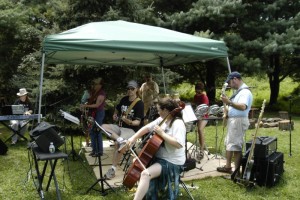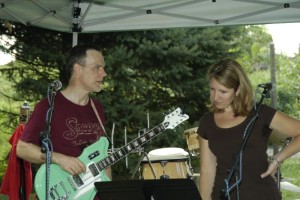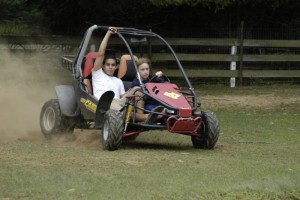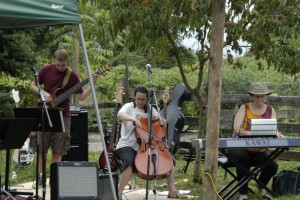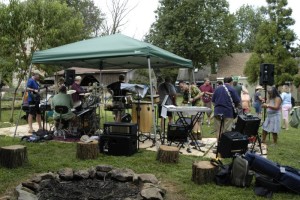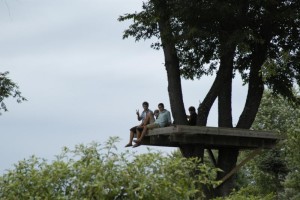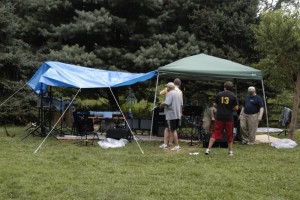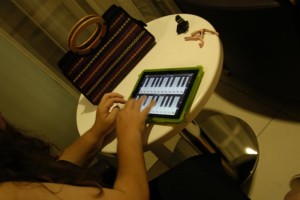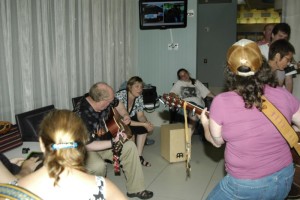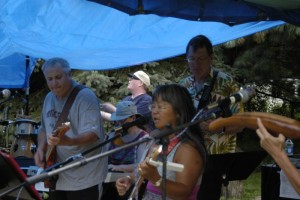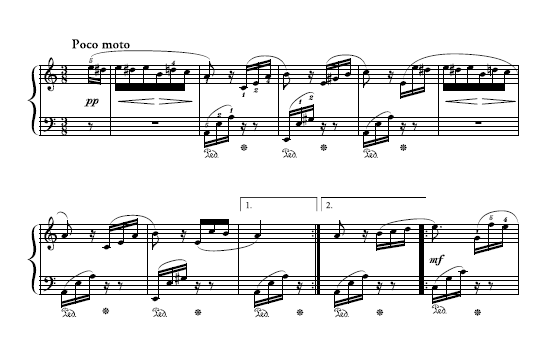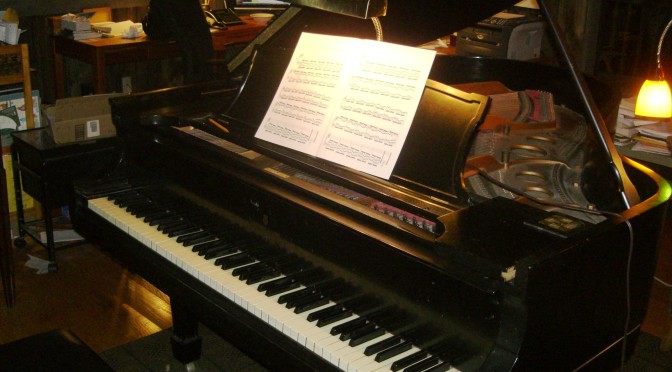A piano teacher looks at what it takes to succeed in music, how parents can help, and why they should care.
To piano teachers: This post is copyrighted. Please do not reprint the whole thing on your blog. Feel free to reprint the first paragraph and then link to it here. You also have permission to print it and hand it out, as long as my name and the blog address are visible. Thank you for respecting my copyright.
Dear Piano Parents:
If it seems like you’re always battling to schedule your kids’ activities, you’re not alone: The soccer coach wants to know if you’re doing traveling team, the Little League coach is scheduling practices, the dance teacher is putting her classes together. And you’re wondering about piano lessons for little Johnny or Suzie.
You want to know how much Johnny will be expected to practice. You want to know if Suzie can just “try it out” and see if it’s “fun.” You need to know what kind of instrument I expect you to have. You want to know if you can come whenever it’s convenient, and whether I’ll be flexible regarding hockey games, ski Fridays, school dances, ice-skating parties, holidays, and play dates. You want to know if I’m “reasonable” by which I think you mean: Can I change my schedule to suit yours, and am I a stickler for daily practice because Suzie has so much else on her plate and “things are crazy around here.”
It doesn’t usually occur to you to ask what you can do as a parent to help your child with music lessons, but that’s something you’re going to have to know, too.
I’m in a difficult position as a piano teacher because I’m afraid of telling you the whole truth. I’m afraid because the unvarnished truth may not what you are probably going to want to hear. And when people don’t like what they hear, they tend to bail out. You may go to another teacher (which is fine: Everyone deserves a compatible teacher). But I’m afraid you may bail on music lessons all together.
Because the truth about learning to play the piano scares people. That’s the last thing I want to do.
Benefits of Music Education
We all know the benefits of music education: the improved test scores, the correlation with less drug and alcohol abuse, the benefits of learning to be part of an ensemble and stick with a challenge. Music is one of the most powerful expressive forms we have in our lives. How powerful? Playing music (not just listening to it) is used to treat neurological problems, to heal people who have had strokes, to slow down the progression of Alzheimer’s and Parkinson’s diseases.
Musician’s brains — as measured by MRIs — actually work differently than the brains of non-musicians. We (musicians) develop pathways that you (non-musicians) don’t, which help us make other connections. The ability to play an instrument, particularly a complex instrument like piano, has been linked to less dementia in old age, better cognitive skills, and faster healing from traumatic brain injuries. (Source)
Not to mention the sheer joy of it. How many adults do you know who say “I wish my mother hadn’t let me quit.” You may be one of them.
So if I scare you (and your child) away, I’m doing you a disservice on many levels.
Learning Piano and Modern Parenting Trends: Not an Easy Fit
The problem is that learning to play piano isn’t easy, and what it requires flies in the face of current parenting trends. You know the trends I’m talking about: The ones that have you driving 500 miles a week to ball games, play dates and the like. I had a student once who showed up for piano wearing his karate uniform, after eating dinner in a moving car. After piano lessons, he was headed for night skiing. No wonder this little 6 year old vomited at the piano. I felt nauseated just listening to his schedule.
Look, the truth is that your kid can’t be a black belt in karate and a ski racer and a soccer player and a pianist and an “A” student and a dancer and in the school play. Kids want to try everything, parents panic if they think they are missing the next new thing. You can go broad or you can go deep; that’s your choice. But you need to know that learning to play piano takes place in the deep end of the ocean.
The Process (and Practice) of Learning to Play Piano
Playing piano also takes a kind of concentration children are rarely exposed to anymore. If you’re one of those parents who wants to protect your child from frustration, you have got to come to terms with the demands of what I call “the big black beast.” Learning to play the piano is all about overcoming frustration. It’s about thinking through problems, breaking them down, solving them one step at a time, figuring things out, finding creative new ways to approach a challenge, putting the pieces back together and trying again and again and again. Piano lessons are life lessons. There’s a reason music students score higher in math. But music isn’t easy.
You’re not going to want to hear the truth because it takes a lot more effort to get your kid to practice than it does to get her to brush her teeth, and YOU are going to have to put that effort in every day for the next four years before she even has a chance of playing “Fur Elise” or “The Entertainer.” Even the most enthusiastic student is not going to want to practice every day (and yes, every day is recommended). Or practice enough. Or practice correctly. If you’re the kind of parent who calls your kid “buddy” and “pal” and “girlfriend” and thinks that regular practice is some kind of punishment that is enforced by the “bad guy” parent, you could be in for a rough road as far as piano is concerned.
You may think that Suzie has talent and will follow in the footsteps of Uncle George, who just sat down at the piano one day and started playing jazz standards. But I can guarantee that’s not how it happened for Uncle George, and it’s not going to happen that way for Suzie, either. Family myth notwithstanding, Uncle George had solitary time with the instrument, whether formally instructed or not, whether playing by ear or by notes. He wrestled with the big black beast — same as your child is going to have to do.
You want to know if Suzie can just “try it out” and the answer is sure: It’s your money, and I can’t stop you from taking a few lessons and quitting. But I can promise that if you’re not committed going in, you’re not going to stick around. Suzie might enjoy her lessons, but at home, she’s going to have to put her thinking cap on and wrestle with note reading and trying to remember where Middle C is and how to count and which finger is number 1 and which finger is number 2. Sure, some kids find this early part fun, and if they do, you’re in luck. But I’ll be honest: Many don’t.
What You Can Do To Help A Child Learn Music
And do you have idea how long a half an hour’s practice time is for a 7 year old? It’s like dog years — an eternity. You may have to help, and ideally, this means paying attention during a young child’s lesson, taking notes, listening to how I tell them to practice and then making sure that they do it. It may even mean learning to read a few notes yourself (Yes, you can, and yes I will teach you, but you may have to work at it. Not every adult gets it on the first try. You need to be willing to brush off YOUR thinking cap, too). You don’t have to learn to actually play the piano, but I do expect you do be able to read a book aimed at a second-grader and figure out enough music reading so you can help them between lessons.
And then there’s the whole buying a piano thing. Teachers do differ, so you’ll need to listen carefully to their reasoning. But the more pleasurable an instrument is to play, the more a child will want to play it. They DO hear and feel the difference, and it does affect their learning, technique, and musical sensitivity.
Good News About Music Lessons
It sounds daunting, doesn’t it? Why not just cross it off the list and move on to soccer? Because a) You don’t want your adult child joining the chorus of people blaming their parents for letting them quit music and b) Because it’s good for them in so many ways: creativity, self-expression, working with others, mental health, good work habits, problem solving, cognitive development, neurological health, and the simple appreciation of art and beauty. (I’ll be writing more articles on the benefits of music education and links to studies showing these benefits in the upcoming weeks, so check back here.)
And let me give you some (more) good news.
Just about any kid can learn to play the piano. Some may take to it more easily than others; some may race ahead; some may lag behind. Some may read quickly, others may be aurally gifted, or able to move their fingers quickly and naturally. But it really does boil down to practice. Don’t give your kid the easy out of saying “Well of course Annie is playing better than you; she’s very talented.” In the long run, talent helps, but it’s not about talent: It’s about DOING IT And yes, there have been studies on this, too.
I’m not asking for miracles here: Most kids who practice in a focused way for 1/2 an hour most days of the week will learn to play well enough to enjoy participating in music in a meaningful way. It may, however, take 4 to 8 years, depending on goals, talent, and practice habits, before a student turns into a musician. When it happens, it’s like watching the tulips bloom in spring.
The bottom line: by giving your child music lessons, you are giving them a lifelong gift.
Music IS joyful, it isn’t always fun. Learn to know the difference — then teach your children well.


